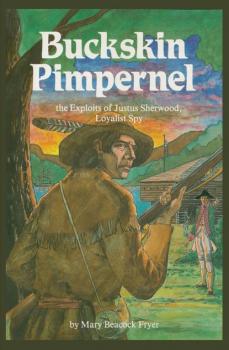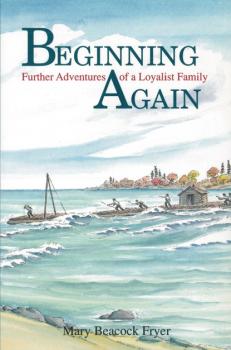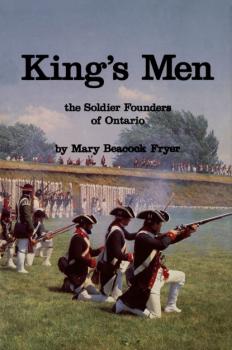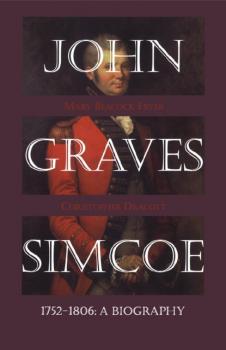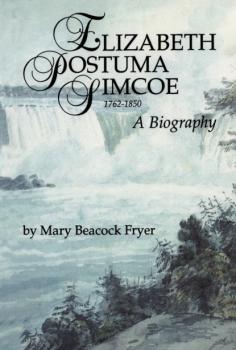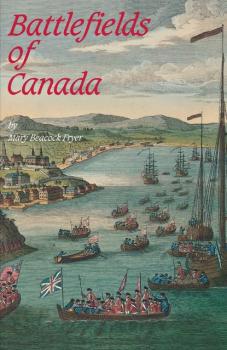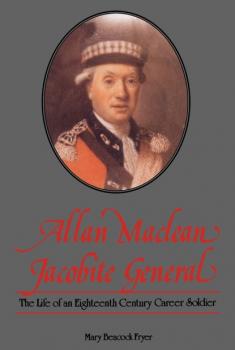ТОП просматриваемых книг сайта:
Mary Beacock Fryer
Список книг автора Mary Beacock FryerАннотация
Beautifully illustrated, this book looks at the nine women who have been Princesses of Wales. From Joan, the «Fair Maid of Kent,» through the tragic Katharine of Aragon, Henry’s VIII’s first wife, and the tempestuous Caroline of Brunswick, the mistreated wife of George IV, to the present fairy-tale, headline-catching Princess, their stories are told with insight and compassion.
Аннотация
At the beginning of the American Revolution, Justus Sherwood left his young family in order to serve with the King's forces, first with General Burgoyne on his disastrous invasion of New York. He was soon appointed Supervisor of Spies and Prisoner Exchanges, and from his «Loyal Blockhouse» on Lake Champlain he sent out raiding parties and spying missions to harass the rebels in New York and England.
Аннотация
Beginning Again is a sequel to Escape: Adventures of a Loyalist Family , Mary Beacock Fryer's historical novel for ten to fourteen-year-olds. This new work chronicles the lives of the Seamans as they make a new start in Canada. The main theme is the building, by Caleb, the father, and his sons Cade, Sam and Ned, of a huge timber raft. Along the way they have many other adventures – a brush with the supernatural, a visit by a wealthy uncle, a return to the family home on Long Island by Ned and his mother, Martha. The climax is the raft journey to Quebec by Caleb, with Cade, Sam, Ned and Elizabeth as crew, and the sale of their logs. While on a shopping spree in Montreal, Elizabeth is the belle at a ball. The Seamans also get the better of an enemy, to Ned's satisfaction – and that of the many readers of the first Seaman family novel. Even those who have not read Escape will be delighted with this exciting adventure.
Аннотация
Francis Simcoe was the eldest son of John Graves Simcoe and Elizabeth Gwillim. his father is celebrated as the first lieutenant governor of Upper Canada; his mother for her Canadian diary and watercolour sketches. Francis was one year old when his family arrived at Newark (Niagara-on-the-Lake) in 1792, and almost six when they returned to England. Letters written by his mother, sisters, and himself reveal his childhood at Eton. At sixteen, he was an ensign in the 27th Inniskilling Regiment. From the beginning of his military career, he kept journals and wrote many letters preserved by the family. His service began in ireland and ended under Wellington – he died leading a storming party in the Trinidad breach at Badajoz, Spain, a thoroughly bloody, costly battle in the Peninsular war. The army had lost a talented young officer. As a warrior, Francis possessed the qualities that had carried his father from ensign to lieutenant general. Letters and journals disclose a soldier who was also an intelligent, loving human being. Of special interest are Francis’ associates who spent time in Canada – the Duek of Richmond, Edward Littlehales, James Kempt, and Julia Somerville (more than a friend?) who became Mrs. Francis Bond Head four years after young Simcoe’s death.
Аннотация
King's Men is the story of the Loyalist regiments who became the soldier founders of the Province of Ontario, the Loyal Colonials who joined the Provincial Corps of the British Army, Canadian Command, during the American revolution. Mythology on the United Empire Loyalists who founded two Canadian provinces is ingrained. We often envisage loyal families marching out of the victorious United States at the close of the American Revolution. But these myths lead us to overlook a fascinating period in the lives of one group of Loyalists – the soldiers who became Ontario's founders. By the time the Treaty of Separation was signed in 1783, four full strength corps were serving in Canada. These were the Royal Highland Emigrants (placed on the regular establishment in 1778, as the 84th Foot), the King's Royal Regiment of New York, Butler's Rangers, and the Loyal Rangers. A fifth corps, the King's rangers amounted to three full companies. A detailed study on what these Provincials achieved is long overdue. King's Men fills a gap in tracing the lives of these United Empire Loyalists who first fought under British command, and spent a difficult period as displaced persons in Canada (people whose only desire was to return to their homes in Britain's older colonies) till the time when they accepted Canada as a new homeland.
Аннотация
One of the legendary figures of Ontario history, John Graves Simcoe was the commander of the Queen’s Rangers during the American Revolution. In 1791 he was appointed the first lieutenant-governor of Upper Canada, and upon his arrival in 1792 he founded the town of York (present-day Toronto). John Graves Simcoe completes a trilogy of Simcoe books published by Dundurn Press. Mary Beacock Fryer’s Elizabeth Posthuma Simcoe was first published in 1989, while Our Young Soldier: Lieutenant Francis Simcoe, 6 June 1791-6 April 1812 was released in 1996. For this third volume, Fryer has teamed with Christopher Dracott, whose vantage point from Devonshire, England helps to provide this book with a complete view of Simcoe’s life.
Аннотация
The diaries, letters, and sketches of Elizabeth Simcoe are drawn upon as sources in this portrayal of the energetic and remarkable woman who came to Upper Canada with her husband when he was appointed lieutenant governor.
Аннотация
Celebrated as the saviour of Upper Canada, Major General Sir Isaac Brock was a charismatic leader who won the respect not only of his own troops, but also of the Shawnee chief Tecumseh and even men among his enemy. His motto could well have been ’speak loud and look big.’ Although this attitude earned him a reputation for brashness, it also enabled his success and propelled him into the significant role he would play in the War of 1812.
Аннотация
Battlefields of Canada encompasses nearly 300 years of history and features sixteen of the most significant Canadian battles as well as some of the most comic or bizarre. Profusely illustrated with sketches, photographs, and detailed maps, each chapter sets the context of the battle in terms of the struggle of which it was part, and then describes the hour-by-hour events. A brief conclusion to each chapter assesses the consequences for the victors and losers, assigning its place in Canadian history. A chronology provides a comprehensive list of every Canadian battle since the early 1600s.
Аннотация
Born on the Isle of Mull to an impoverished lair of the clan Maclean, young Allan fought his first battle – for Bonnie Prince Charlie at Culloden – from a sense of deep conviction and family loyalty. He fled into exile when the Stuart cause was lost. In Holland he became a mercenary, and after amnesty was granted for Jacobites, he joined the British army serving in North America during the Seven Years’ War, and again during the American Revolution. He was at Quebec on New Year’s Eve 1775 when the city was attacked by Benedict Arnold, and shortly thereafter become the military governor of Montreal. Between the two wars, when the army was reduced and he was on half-pay, Maclean was preoccupied with finding ways to meet the expenses he incurred while on active service. He made himself useful to politicians and office-holders who had access to public funds or who could recommend him for promotions. One who helped him was Lauchlin Macleane, an ambitious politician who was probably the notorious Junius, who wrote vicious letters to newspapers attacking the government, but was never unmasked. This fast-paced and intriguing book gives a penetrating insight into the challenges facing a man who chose a military career during the tumultuous period of the eighteenth century.


